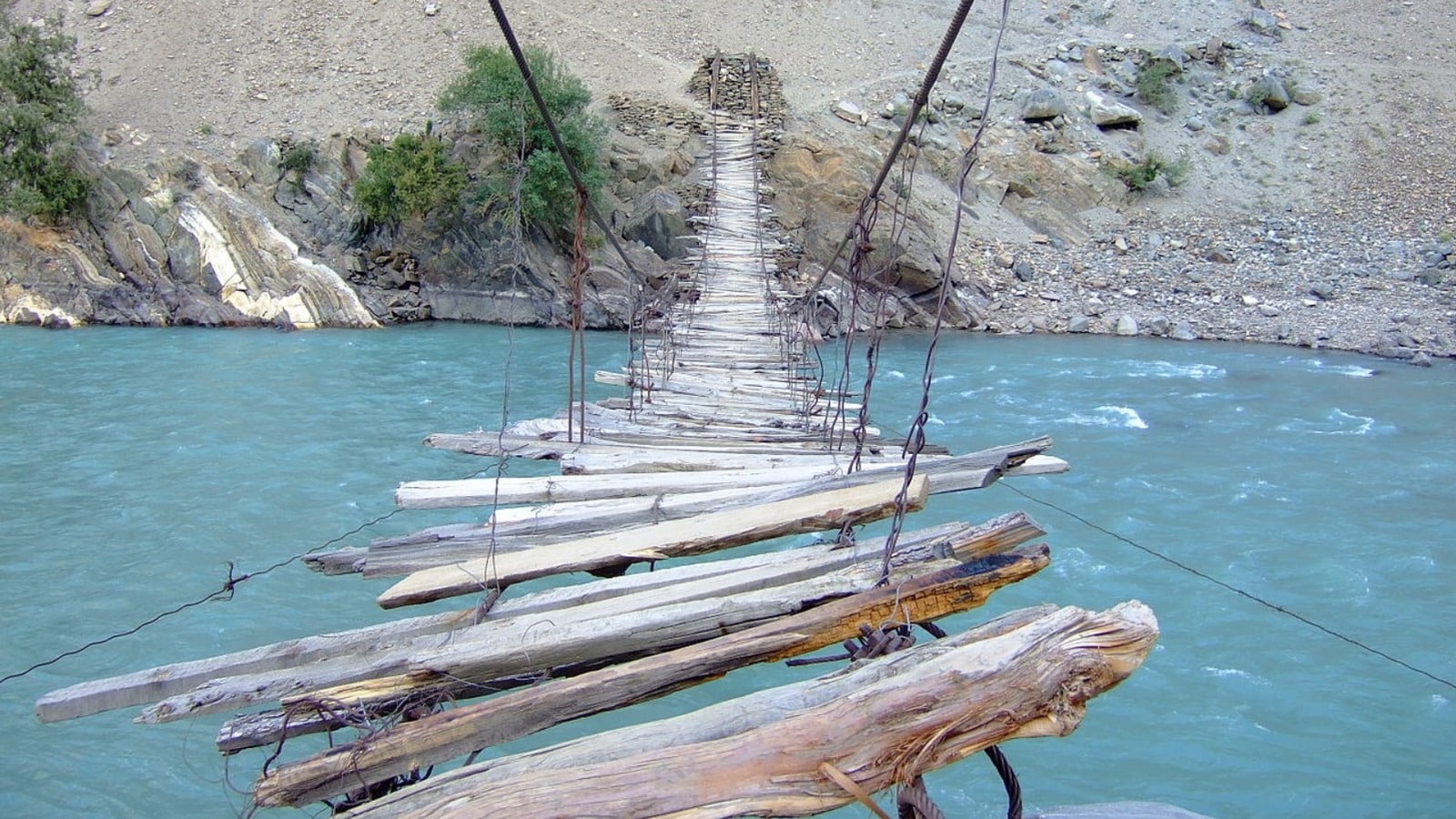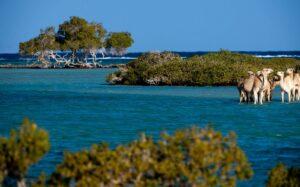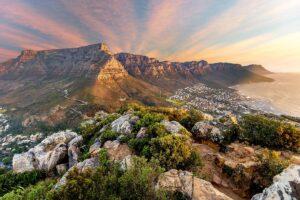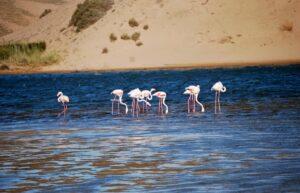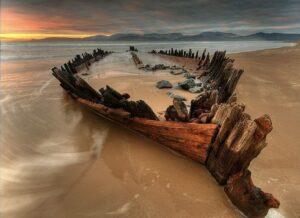There are bridges all over the world, some old, some well-built, some improvised using whatever would fit the bill and on hand. All the bridges have the same goal, which is to connect two points above the void. Some bridges are the only means of access, and it takes a good deal of courage to cross them:
Would you cross the world’s most dangerous bridges?
1.Hussaini Hanging Bridge (Pakistan)
The Hussaini Hanging Bridge is considered to be the most dangerous bridge in the world. You don’t need to stare long and hard at this photo to see why.
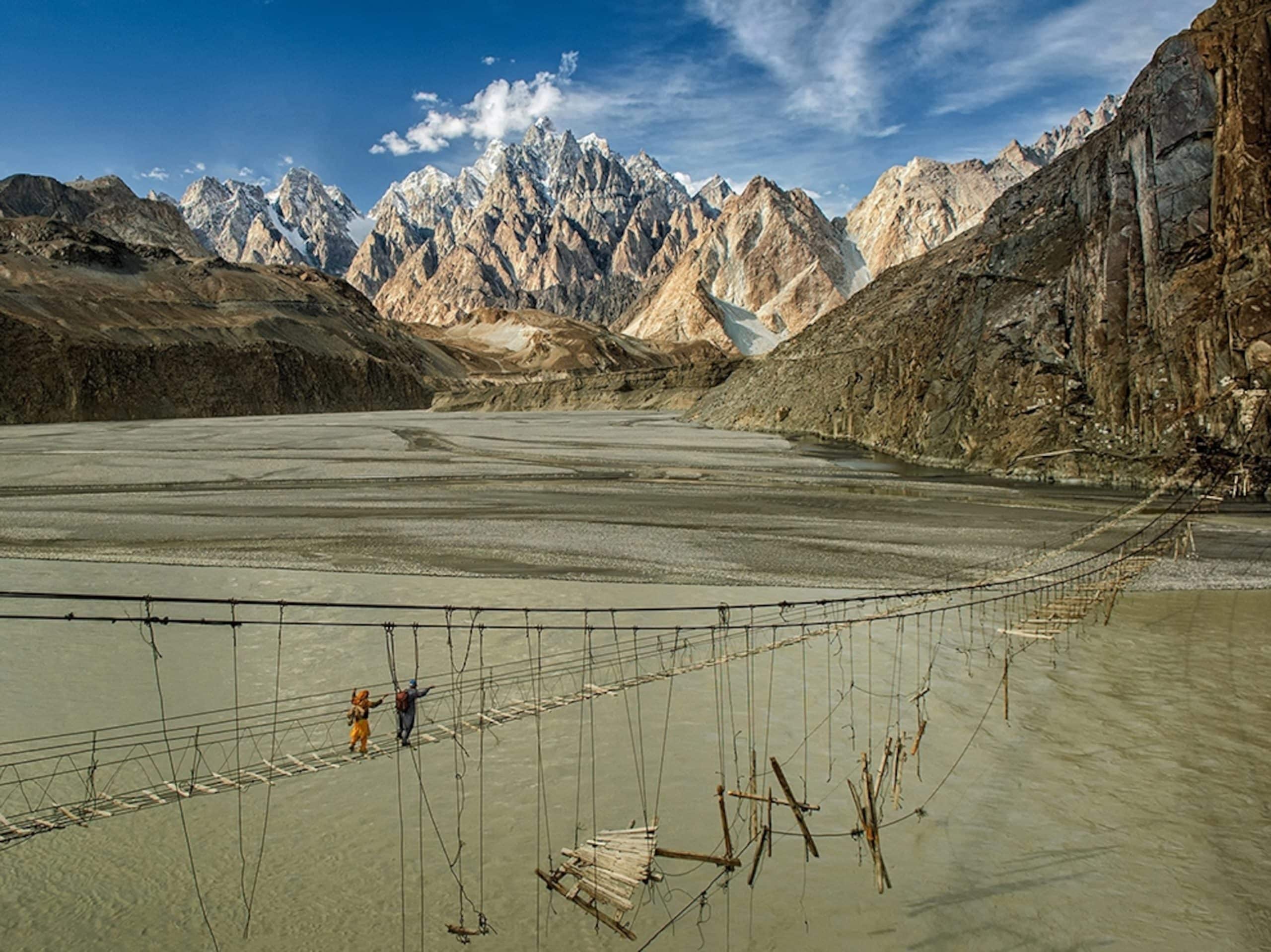
This rope bridge crosses over Borit Lake in the Upper Hunza. The bridge is poorly maintained and shakes viciously when you walk across it. If you take the wrong step, you’ll end up flying into the Hunza River below. Nonetheless, brave (or foolish) hikers like to test their bravery by crossing the bridge when they visit
2.Langkawi Sky Bridge (Malaysia)
This curious-looking bridge in Malaysia is 400 feet above the ground and has been closed several times for maintenance purposes. Its reopening was delayed several times but it is now open for use, although not many people actually dare to cross.
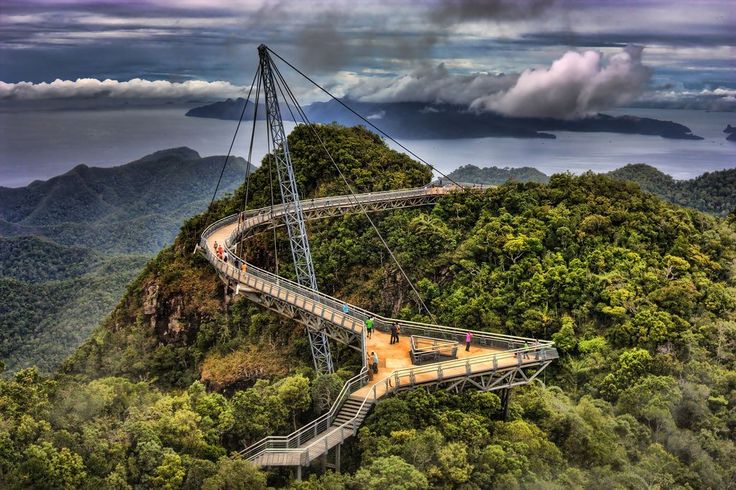
At one point, the Sky Bridge was closed for two years because it was considered unsafe to use, while there was until recently a rumor going around in Langkawi that claimed the bridge could potentially collapse. We’ll be giving this one a miss but hey, you’re welcome to take the risk
3.Carrick-a-Rede Rope Bridge (Northern Ireland)
This 66-foot-long bridge might not seem like much, but few people make it there and back. (Don’t worry, they don’t fall in – they just can’t stomach the journey twice and so they opt for a ferry on the way back!)
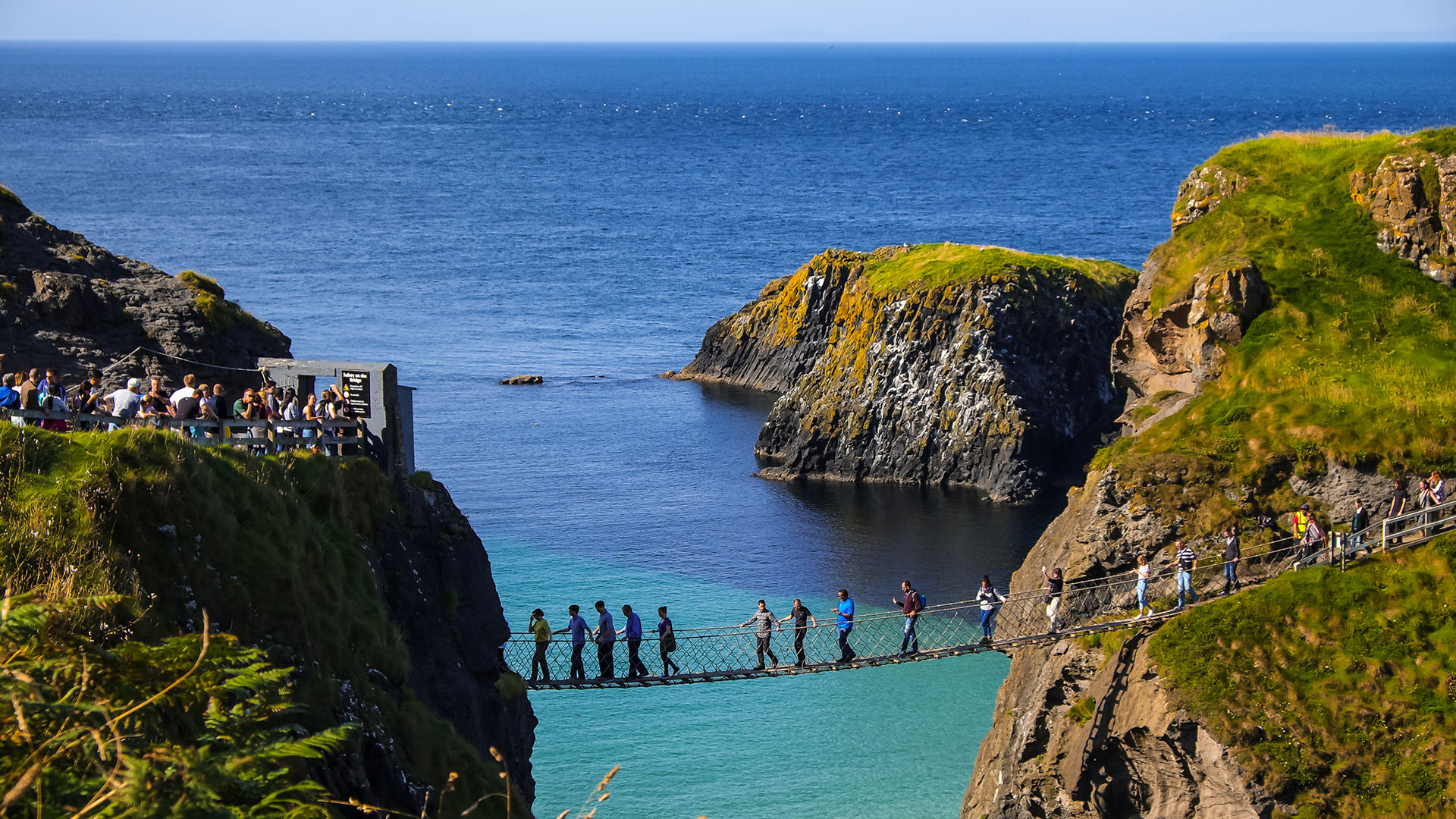 4.Deception Pass Bridge (Washington)
4.Deception Pass Bridge (Washington)
Deception Pass Bridge looks pretty daunting from afar, let alone close up. The twin bridges are 180 feet above the water and connect Whidbey Island and Fidalgo Island. In the 1900s, locals traveled across the water using a ferry.
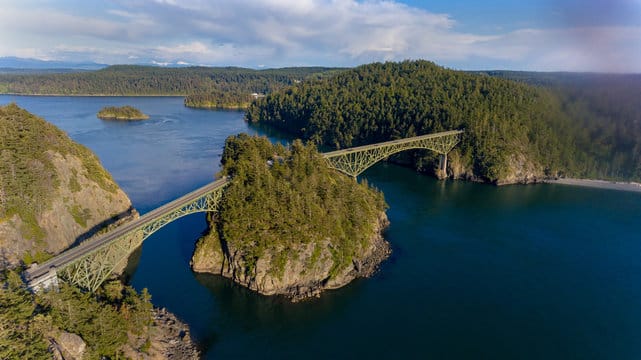
They took their horse-and-buggy on board and, when they wanted to return, would bang a saw with a drumstick until the ferry arrivedThere is another bridge on the other side of the mountain made up of just a few planks. The drop below is pretty dramatic and if you decide to cross, we only have one piece of advice to offer you crazy adventurers: don’t look down!
5.Hanging Bridge of Ghasa (Nepal)
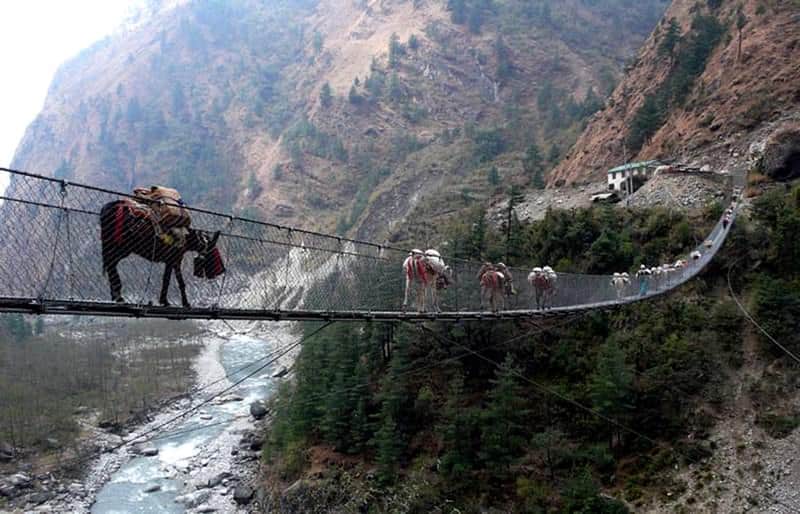
This breathtaking bridge may look terrifying, but it also happens to be one of the main sources of transportation for the locals in the village of Ghasa, Nepal. It serves an important purpose: the bridge was built to ferry people and cattle, with shepherds and animals moving freely across it daily.
The bridge is extremely narrow and it stretches high above a river valley. It’s also susceptible to wind gusts, which occur regularly in the area. The locals have grown accustomed to the bridge, but many tourists are too afraid to cross it. It may look fragile and unstable, but it also has high railings which make it safer.
6.Keshwa Chaca Bridge (Peru)
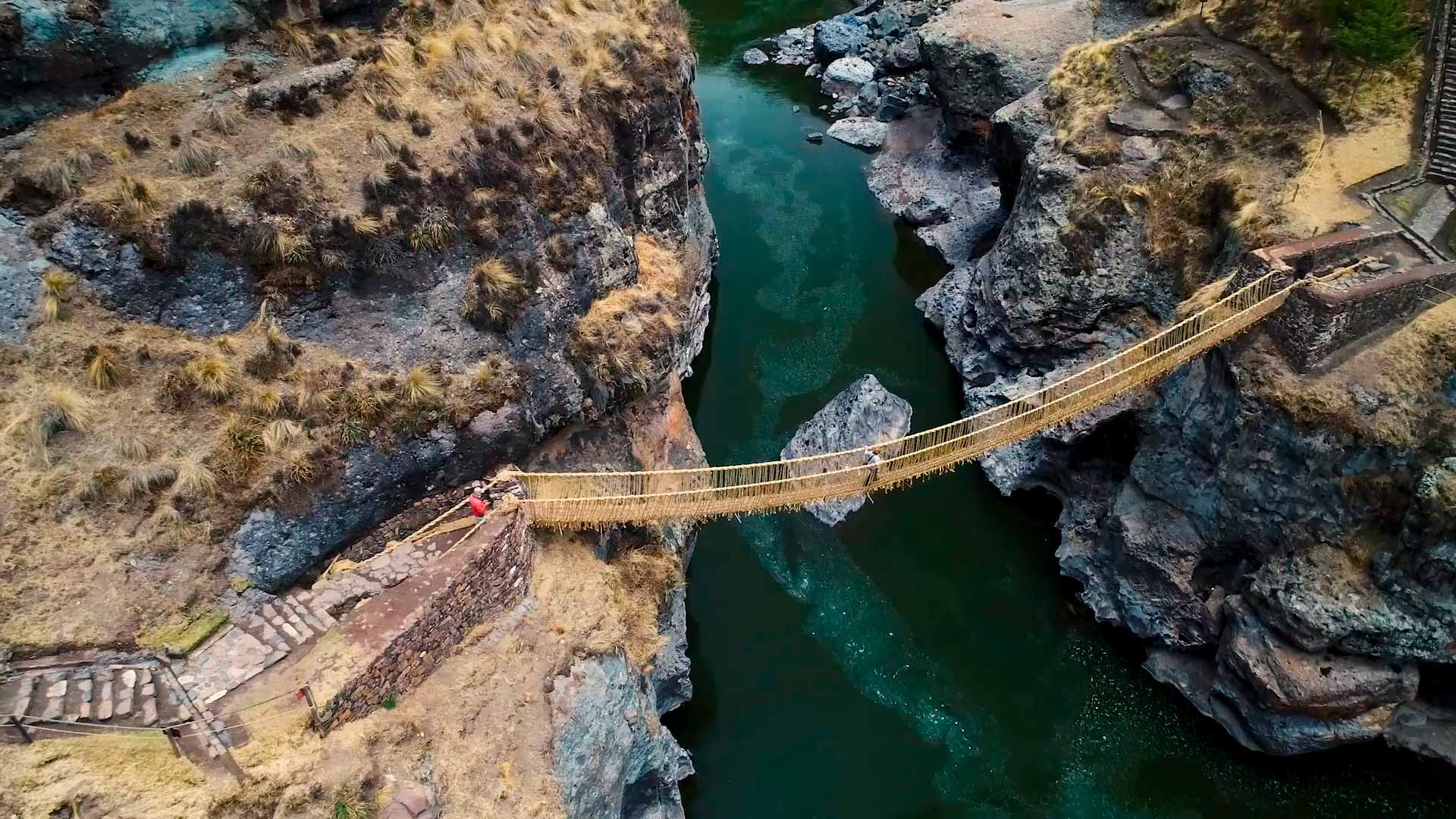
While most bridges are made from wood or steel, the Keshwa Chaca Bridge is made from woven grass. If you are worried it won’t support your weight, do not fear. The bridge has lasted for 500 years.It was the Incas who initially built the bridge and it required a big team. Women braided small thin ropes which the men then used to braid large support cables. The result is this stunning bridge which demonstrates the talents of the Incas and their intriguing construction methods.
7. LIVING ROOT BRIDGES OF MEGHALAYA, INDIA
The Living Root Bridges, commonly found in the Indian state of Meghalaya, are a unique type of bridge formed by tree shaping.
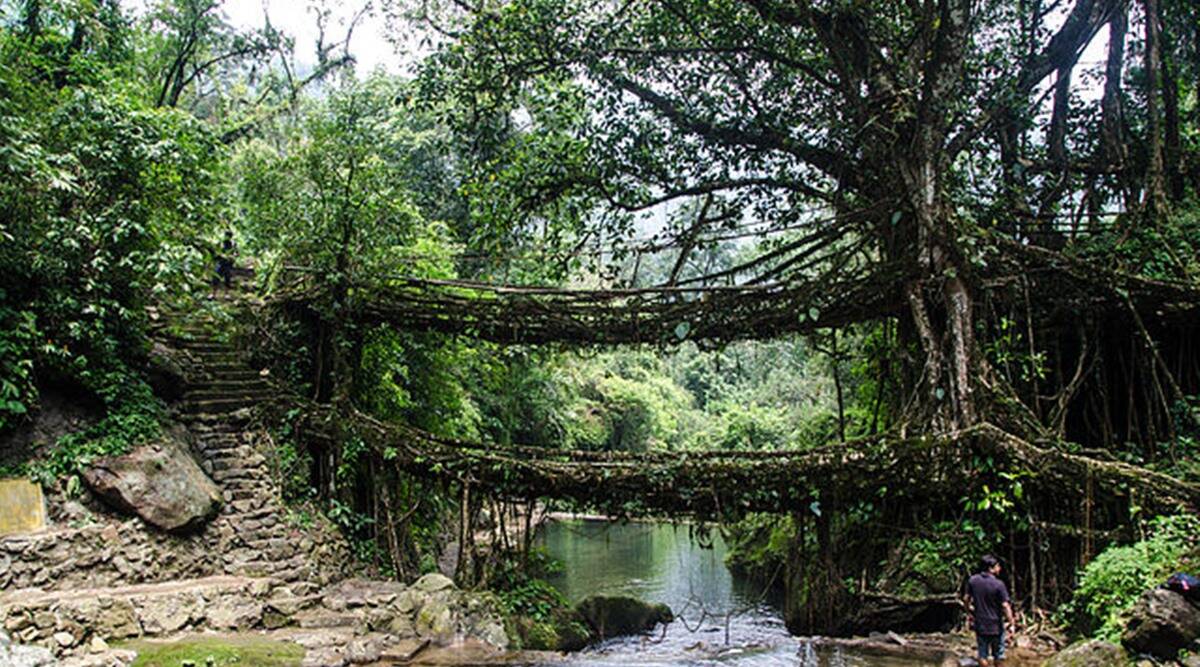
They are made from the aerial roots of the Indian rubber tree by the Khasi and Jaintia tribes, who reside on both sides of the river.
The roots of these trees are wrapped around a framework of bamboo or palm stems and guided across the river, where they are placed into the earth.
Living root bridges can grow to be over 20 m (66 ft) long and are unsafe to walk on due to their slippery nature, yet they are stable constructions that last a long time thanks to the regenerating ability of the trees
8. MONKEY BRIDGES, VIETNAM
Monkey bridges are a unique type of bridge found in the Mekong Delta of Vietnam.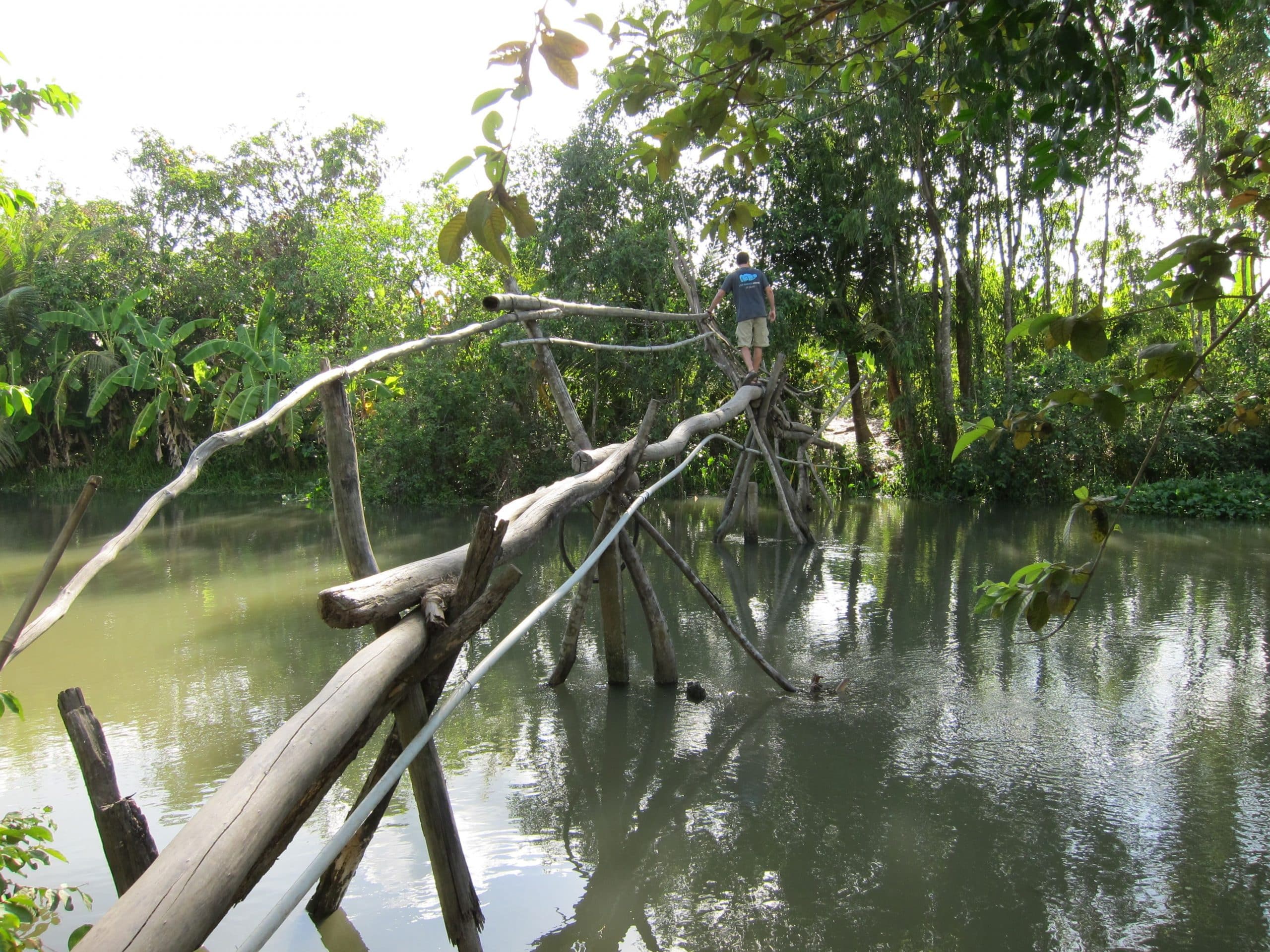
Suspended between two to 10 m (6.5 to 33 ft) above the Mekong Delta, these bridges are used to travel between villages by foot.The bridges are made of one piece of bamboo log with only one railing for support and are built by the residents of the surrounding area.They are called monkey bridges because most people have to bend over and hold on tight like a monkey while crossing.
9. PUENTE DE OJUELA, MEXICO
The Puente de Ojuela is a suspension bridge in Mapim, Durango, Mexico, built in 1898.
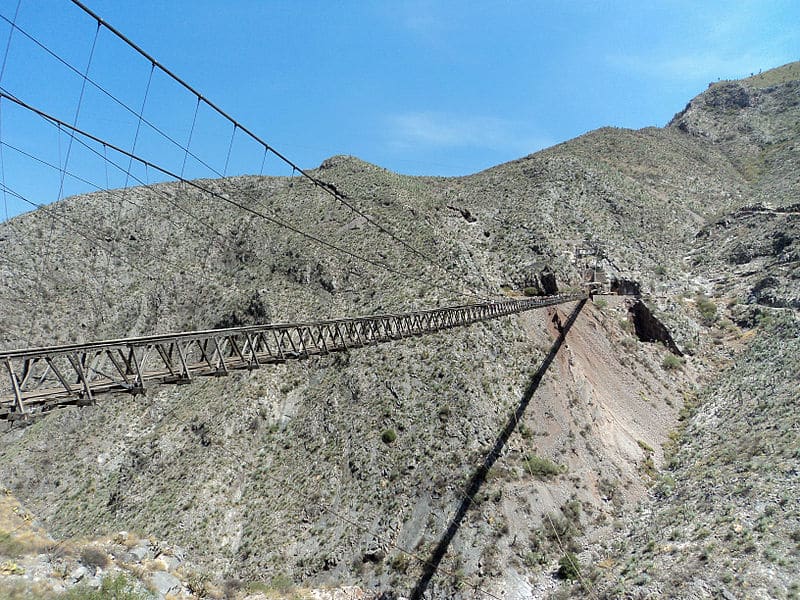
The 318-m (1,043-ft) bridge has become a popular tourist attraction since 1991 when visitors started joining tours of the Ojuela ghost town.
It’s mostly made of wood and rises 109 m (360 ft) above the canyon floor.
Because it sways and squeaks when crossing, this is one of the most dangerous bridges in the world to cross by foot. And if you’re game, you’ll catch views of the desert canyon through the gaps in the wooden floorboards.
1o. VITIM RIVER BRIDGE, SIBERIA
The Vitim River bridge in Siberia is a narrow bridge built in the 1980s.
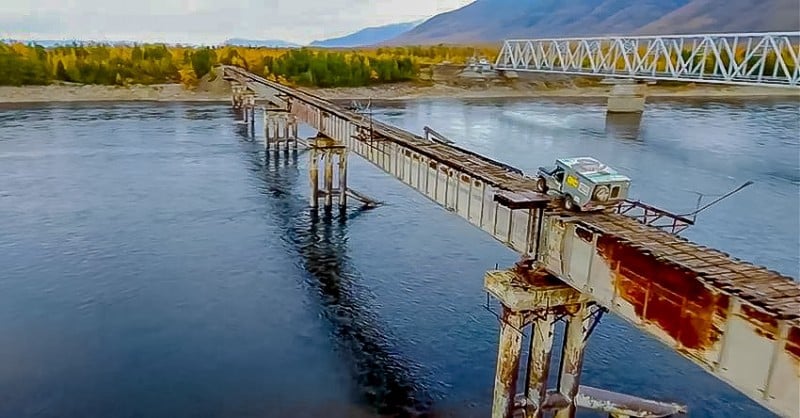
The original bridge is only 15 m (50 ft) above the river and is 570 m (1870 ft) in length.The bridge was previously a railway bridge over the Vitim River but it’s now used by vehicles.
At only 1.8 m (6 ft) in width, it’s barely wide enough for one car and lacks guard railings, making it one of the most dangerous bridges in the world to cross.Watch out for the rotting hardwood boards and the region’s cold temperatures, which result in the bridge being covered in slippery ice most of the year.
